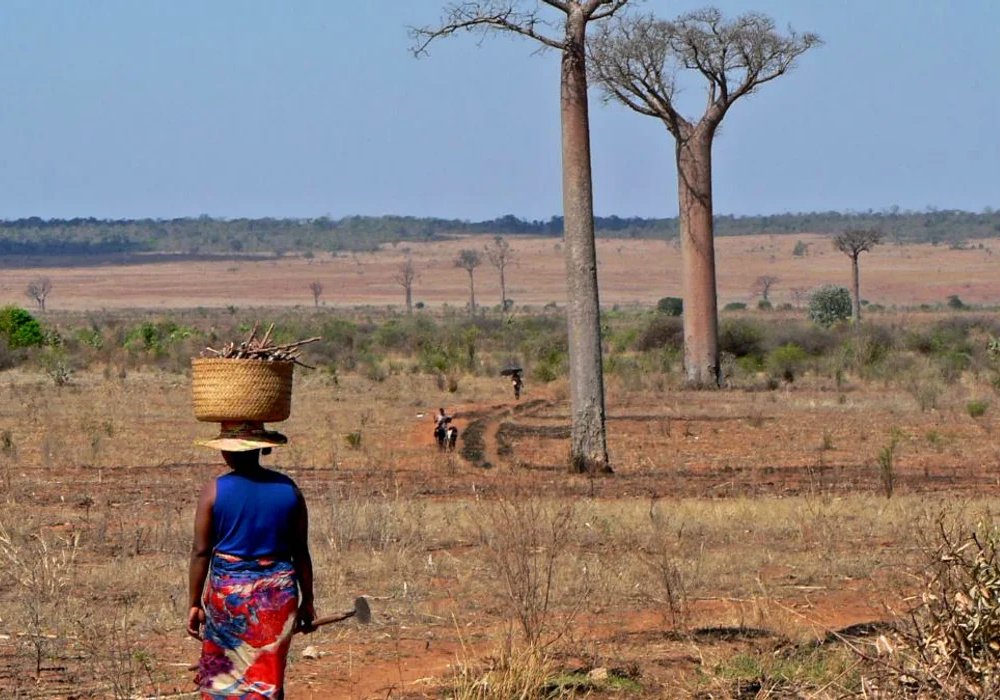Climate Change could Alter the Tropical Rain Belt, Impacting Global Biodiversity and Food Security
Climate change has already altered many natural phenomena that are important for sustaining life on earth, including changes in rainfall patterns and the duration of seasons. A recent study has discovered that climate change could devastatingly alter the tropical rain belt shifts, which can cause increased drought stress and intensified flooding. This change in the earth’s tropical rain belt could in turn affect global biodiversity and food security.

climate change could alter the tropical rain belt shifts resultging in drought stress and intensified flooding | Image: Ecowatch
Researchers at the University of California, Irvine, and other institutions studied how the tropical rain belt – a narrow band of heavy precipitation near the equator – would react in the future with constantly increasing carbon emissions through 2100. Published in the journal Nature Climate Change, the findings of the study revealed that the rain belt will shift northward over the Eastern Hemisphere, affecting countries in southeastern Africa. In Madagascar, such impacts are already being experienced.
According to the lead author, Antonios Mamalakis, a postdoctoral fellow in the Department of Atmospheric Science at Colorado State University,
Our work shows that climate change will cause the position of Earth’s tropical rain belt to move in opposite directions in two longitudinal sectors that cover almost two-thirds of the globe, a process that will have cascading effects on water availability and food production around the world.
The research team has stressed that not all parts of the tropic will be affected equally. For example, the rain belt will move north in parts of the Eastern Hemisphere but will move south in areas in the Western Hemisphere.

Climate change could alter the tropical rain belt, and Madagascar is already experiencing its effects | Image: Telegraph
The study says that a northward shift of the tropical rain belt over eastern Africa and the Indian Ocean will increase the drought stress in parts of Africa and Madagascar, along with intensified flooding in southern India; whereas a southward move of the rain belt over the eastern Pacific Ocean and the Atlantic Ocean will intensify the drought spells in Central America.
For the study, the team examined computer simulations from 27 state-of-the-art climate models and measured the tropical rain belt’s reaction to a future scenario of continuous carbon emissions throughout the present century.
Co-author James Randerson, UCI’s Ralph J. & Carol M. Cicerone Chair in Earth System Science, described that climate change causes the atmosphere to heat up by different amounts over Asia and the North Atlantic Ocean. He further added,
In Asia, projected reductions in aerosol emissions, glacier melting in the Himalayas, and loss of snow cover in northern areas brought on by climate change will cause the atmosphere to heat up faster than in other regions. We know that the rain belt shifts toward this heating and that its northward movement in the Eastern Hemisphere is consistent with these expected impacts of climate change.
He said that the dwindling of the Gulf Stream current and deep-water formation in the North Atlantic is likely to have the opposite effect, which will cause a southward shift in the rain belt across the Western Hemisphere.
The study said that the next step is to translate those changes to impacts on the ground, in terms of natural calamities that may occur, change in infrastructure and ecosystems to guide adaptation, policy, and management change.


